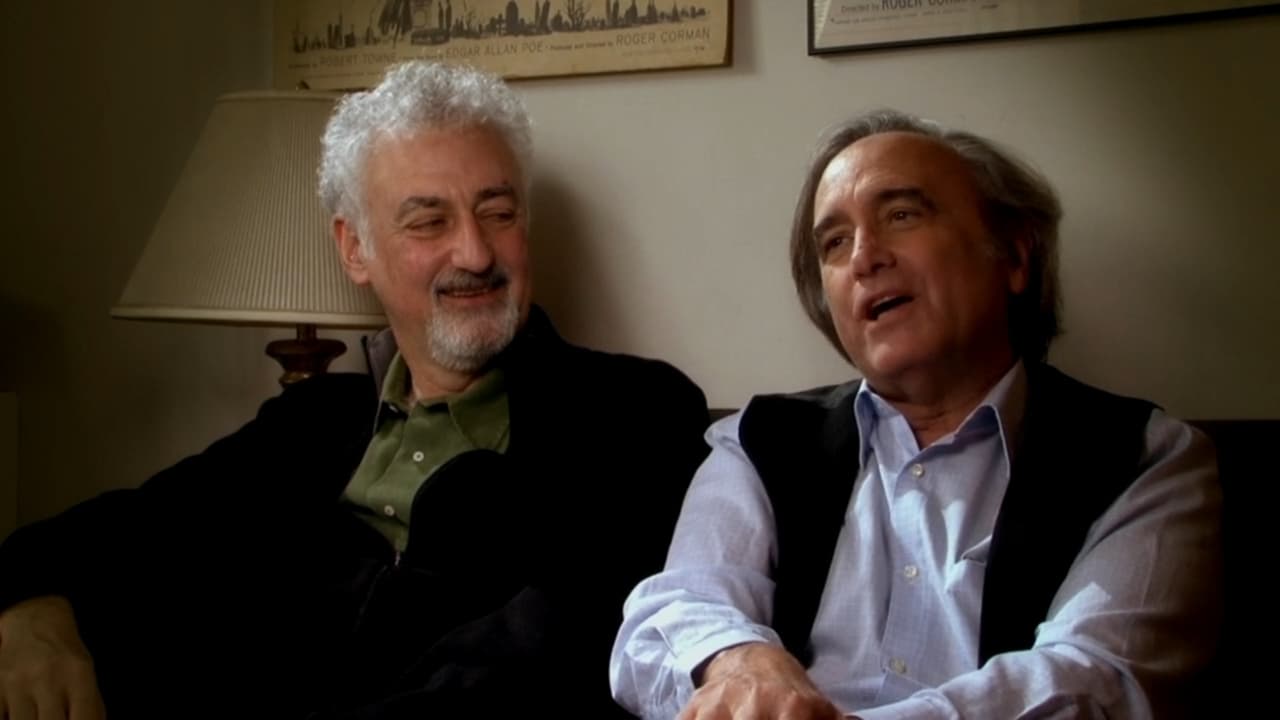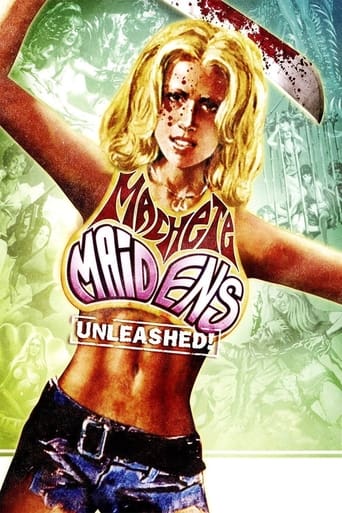

Directed by Mark Hartley, the man behind Electric Boogaloo: The Wild, Untold Story of Cannon Films, comes Machete Maidens Unleashed. It's a fast moving but pretty informative look at exploitation films in the late 60's, 70's and early 80's. It's main focus is to give explanation about the wild films that came out from the Philippines. Many of the B movie staples came from this era of film. It spans about 15 years where these films were all the rage at Drive-Ins and the rules didn't apply. The film starts off with showing how production moved from the states to the Philippines after it was liberated by America. The country was very American friendly. Gerry de Leon and Eddie Romero were the first filmmakers to establish themselves and start making films. The first focus was on the Blood Island films of which there were a few. It's funny to hear the filmmakers talk about these films while clips are show. The films were goofy horror movies shot on shoestring budgets with thin plots and bad acting. What brought people to these films were the shocks promised from the trailers. There would be gore, obviously fake gore but monsters, science fiction and terror. Roger Corman is introduced as producer as his time line crosses with that of Eddie Romero. Corman was a bigger name and he had lofty aspirations. Most of the 'hit' films being produced by him. The montage of what he was known for is hilarious. There's also a montage of all of the elements in a good Corman movie. Having not seen many of his film, it was interesting that he wanted to make the 'best' film with the money he had.But the films out of this area Corman is known for where highlighted in a feature on women in prison film. These films were actually highly successful because of the way they portrayed women as the heroes. Even though they were meant to titillate and entertain, the films helped the up and coming feminist movement. There are interviews with many of the famous actress such as Pam Grier, Colleen Camp, Judith Brown, Leigh Christian & Gloria Hendry. They were put through the ringer. The interviews are the most fascinating here. There are first hand accounts of what the actresses had to go through. Some of the things they went through will be shocking but not against the times. Sig Haig gives insight on what he had to go through in these films as well. Being that all these films were R-rated or not rated at all, it was refreshing to see the clips in all their uncensored glory. I would hate to watch a PG-13 version of this film. It wouldn't give the films their shock credit. There are ample amounts of nudity and bloody violence. The highlight of all the interviews is many of the moments with John Landis. He provides uncensored thoughts which are insightful and laugh out loud funny. I could have seen all the uncut footage from his interviews. I know there was more great commentary from the director. In the middle of the 70's the blaxploitation films were all the rage. Two of the films that led the charge came out Phillippines. Cirio H. Santiago directed TNT Jackson, which many of the actors talked about. It was a film that mixed Kung Fu with full on action and had a black female lead. This section of the documentary is most about the late 70s mixing of martial arts in the B-movie era. The stunt work is highlighted as most of the actors did all their own stunts. And the extra were on board for doing anything. Many were injured and a few died. But it was the idea of being in a 'big' Hollywood film that tested people's limits. A small portion of the film is devoted to Francis Ford Coppola whose Apocalypse Now is infamous for it's filming in Philippines. It's only give a few minutes in the documentary but enough is shown that made me want to dive into Heart of Darkness. The final stretch of the film speaks about Manila International Film Festival and the growing film market. Jaws and Star Wars are targeted as B-movies that were made on a A-level. With these films the decline of the Philippine cinema began. The final big success was the James Bond type spoof starting homegrown Weng Weng. It was the last hit of this era of B-movie cinema. This documentary was so insightful and entertaining. I wasn't bored for a minute. Given that it is unrated also help. So much footage was shown that I was intrigued to see some of these films as a whole. To my surprise, Netflix does carry many of these films. I can see a B-movie marathon in my future.
... View MoreAfter being left with an almost endless "must watch" list from watching Mark Hartley's fantastic doc about the Ozploitation film industry called Not Quite Hollywood,I was surprise to discover that a follow-up had been made about the Philippines film industry.The outline of the film:The documentary takes a look at the huge number of American and Australian B (and in Apocalypse Now's case A) movie film productions, that headed straight to the Philippines and made full use of the stunning locations and the super cheap labour (about $5 a day!.)At the same time,whilst all of the movie cameras were rolling,Ferdinand Marcos declared that the country was to enter martial law.View on the film:Although the opening of the film suggests that the doc is going to take a look at the Australian,US and Philippine films made during the era,I was sad to see,that with the exception of the always interesting Brian Trenchard-Smith, Ozploitation seems to have been completely left behind,so that the doc can instead focus on the US and Philippine film productions.Luckally the films that director Mark Hartley decided to focus turned out to some tremendous choices.For the first half,the film mainly focuses on the production of Blaxploitation movies,which along with allowing to show a number of the beautiful looking actresses being partly naked,also allows Hartley to show a number of thrilling action scenes that will have you rushing to grab a pen and paper right away.As the doc takes its focus from looking at "international" productions to mainly looking at the "local" Philippines productions,I feel that whilst this section of the doc offers a number of terrific production stories, (with the one about actor Weng Weng being a particularly fun and touching section)I feel that Hartley struggles to connect the movie productions and the social/political turmoil in the Philippines effect on the Philippine film industry in the same way that he had smartly done in Not Quite Hollywood.
... View MoreI watched a couple of women-in-prison movies the other day. Both were made in the Philippines. This documentary goes behind the scenes to show why and how Roger Corman type films were made there. Cheap actors and lax safety rules made for an ideal situation for making low budget films.Blood, breasts, and beasts were the staples of films like Mad Doctor of Blood Island, Beast of Blood, The Big Doll House, Women in Cages, Black mama, White Mama,The Big Bird Cage, and the classic Vampire Hookers.We see stars like Pam Grier learning the craft in these cheap films. Part of a new wave of women as action heroes, which was new to moviegoers.The documentary was invaluable in understanding the background of filmmaking.
... View MoreThis documentary with it's (deliberately?) misleading title, gives viewers a brief overview of the Filipino cult cinema of the sixties, seventies and eighties. In a seemingly endless string of fragmented interviews (some of the edits so short that the subject's title is flashed for a fleeting moment), the film tries to draw an overview of this period of American/Filipino co-productions. Archival footage is interspersed here and there, and occasionally we are given context.Is it interesting? Yes, but as much as it is frustrating. For you will certainly find that the film never settles down from its opening moments. The pace of the film is that of one tempo, as if the editor was worried that we might lose interest, or as if the visual information was paramount and the factual information (something I'm more interested in than anecdotal) was a mere triviality. You will be bombarded with cuts and clips and cues for the duration of the film - it's an editing style borne from the free-to-air TV realm that transposes to the cinema with a terrible effect.Also, the relentless funk soundtrack (the staple to the C-Grade Grindhouse films) undermined the interviewees' comments, robbing them of any memorable moment and washing them altogether with the same colour. I can't help but relate the style of this documentary with American style 20-to-1 type shows, where the interviewees are there to provide colour to a proposed topic, not to provide any real insight. This is the films worst crime, for Filipino film-makers we are shown are outnumbered five-to-one by the Americans, yet the tiny grabs we are given with these eccentric characters were far more interesting and exotic.This film belongs on a commercial or pay TV network, but the limited audience and scope of the film will probably condemn it to the Australian Broadcasting Corporation's schedule sometime in the near future. Wait for it then, for the cinema gives little to this difficult documentary.
... View More